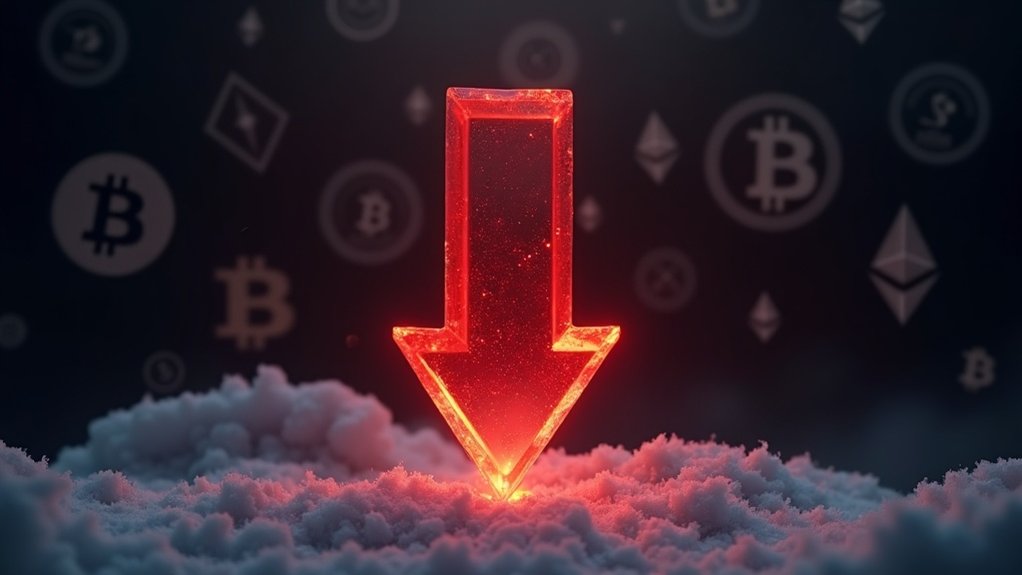Avalanche is a Layer-1 blockchain platform launched in 2020 by Ava Labs. It tackles the blockchain trilemma through three specialized chains that handle different functions. AVAX, its native token, powers transactions, staking, and governance while maintaining sub-second finality. The platform runs on an advanced Proof of Stake consensus mechanism, supporting thousands of transactions per second. Its Ethereum compatibility and subnet architecture have attracted significant investment and partnerships. The ecosystem continues to expand rapidly.
Avalanche is shaking up the blockchain world—and not just because of its explosive name.
Launched in 2020 by Ava Labs, this open-source Layer-1 platform tackles the infamous blockchain trilemma: scalability, security, and decentralization.
Cracking crypto’s holy trinity where others falter—Avalanche doesn’t compromise on speed, safety, or staying decentralized.
Most blockchains fumble at least one of these.
Not Avalanche.
The system operates on three interconnected blockchains.
X-Chain handles asset transfers, C-Chain runs smart contracts, and P-Chain coordinates validators.
It’s like a three-headed crypto monster, but in a good way.
Each chain has its job, and they don’t step on each other’s toes.
AVAX is the native token that powers everything.
With transaction finality under two seconds, it sets a new standard for blockchain speed.
You need it for transactions, fees, staking, and voting on governance.
The more you stake, the more you participate.
Simple economics.
The token’s supply is capped annually with a burn mechanism on fees.
Scarcity by design.
Avalanche’s consensus mechanism is where things get interesting.
It builds on Proof of Stake but with a twist.
Validators randomly sample each other in a “gossip” protocol until they reach agreement.
This approach achieves sub-second finality and thousands of transactions per second.
Fast. Really fast.
The platform raised serious cash—$42 million in its ICO and later $230 million from big-league investors.
Money talks, and it’s saying Avalanche has potential.
The January 2023 partnership with Amazon Web Services significantly enhanced the platform’s infrastructure capabilities and enterprise appeal.
For developers, the C-Chain’s compatibility with Ethereum’s Solidity language is a game-changer.
Write once, deploy twice.
No learning curve.
This has attracted DeFi projects, NFT marketplaces, and gaming applications seeking Ethereum’s familiarity without its congestion or high fees.
Subnets are Avalanche’s secret weapon.
They’re customizable blockchains that follow their own rules while leveraging the main network’s security.
Think of them as semi-private blockchain clubs with their own bouncers.
The architecture brilliantly enables developers to create custom blockchain networks seamlessly, fostering innovation in the ecosystem.
Avalanche isn’t perfect—no blockchain is.
But it’s fast, developer-friendly, and solving real problems.
In the crowded Layer-1 race, it’s carving out its place.
One avalanche at a time.
Frequently Asked Questions
How Does Avalanche’s Consensus Algorithm Differ From Other Blockchains?
Avalanche ditches traditional consensus methods for something faster and smarter. No energy-wasting mining or single leaders here.
Instead, it uses repeated random sampling where nodes poll small validator groups about transactions. This creates a snowball effect toward consensus.
Unlike slow PoW chains or scale-limited BFT protocols, Avalanche finalizes transactions in seconds, even with thousands of validators. It’s leaderless, energy-efficient, and handles high throughput. Pretty clever stuff, actually.
What Are the Environmental Impacts of AVAX Mining?
AVAX mining has minimal environmental impact compared to other blockchains.
It consumes just 469.8 MWh yearly—equivalent to 44 U.S. households.
Its carbon footprint? A mere 178.3 tonnes CO2e.
That’s 12 times less than Ethereum and 300,000 times less than Bitcoin.
Pretty impressive, right?
As a Proof-of-Stake network, Avalanche sidesteps the energy-guzzling habits of Proof-of-Work systems.
Still, some localized impacts exist: noise, water usage, and e-waste.
Nothing’s perfect in crypto-land.
Can AVAX Tokens Be Staked, and What Are the Rewards?
Yes, AVAX tokens can be staked.
Validators need 2,000 AVAX minimum, while regular users can delegate as little as 25 AVAX. Pretty sweet deal.
Rewards? They fluctuate between 4.4% to 8.5% APY. Nearly half of all AVAX is currently staked—people clearly see the appeal.
No slashing risk either, which is rare in crypto. Stakes lock for at least two weeks, up to a year.
Hardware wallets work for self-custody.
How Does Avalanche Handle Cross-Chain Compatibility?
Avalanche handles cross-chain compatibility through its robust bridge architecture and EVM compatibility.
The Avalanche Bridge locks assets on source chains while minting equivalent tokens on Avalanche—pretty neat system.
Its validator “Wardens” verify transactions, distributing trust across the network.
The platform supports both fungible and non-fungible tokens from multiple chains, including Ethereum and Bitcoin.
Plus, those subnets? They’re customizable blockchains that enhance scalability.
Cross-chain NFT support lets digital assets roam free between ecosystems.
No single-chain prison here.
What Major Partnerships Has Avalanche Secured in the Crypto Space?
Avalanche has secured partnerships across several sectors.
They’ve teamed up with Crypto Finance AG (a Deutsche Börse subsidiary) and Citibank in the financial space.
AWS collaboration helps developers build custom blockchains.
A major FIFA partnership brings blockchain to global sports fans.
They’re also working with Alipay on Web3 vouchers for everyday transactions.
VanEck’s ETF filing signals growing institutional interest.
Pretty impressive lineup for a blockchain that’s still relatively young.









